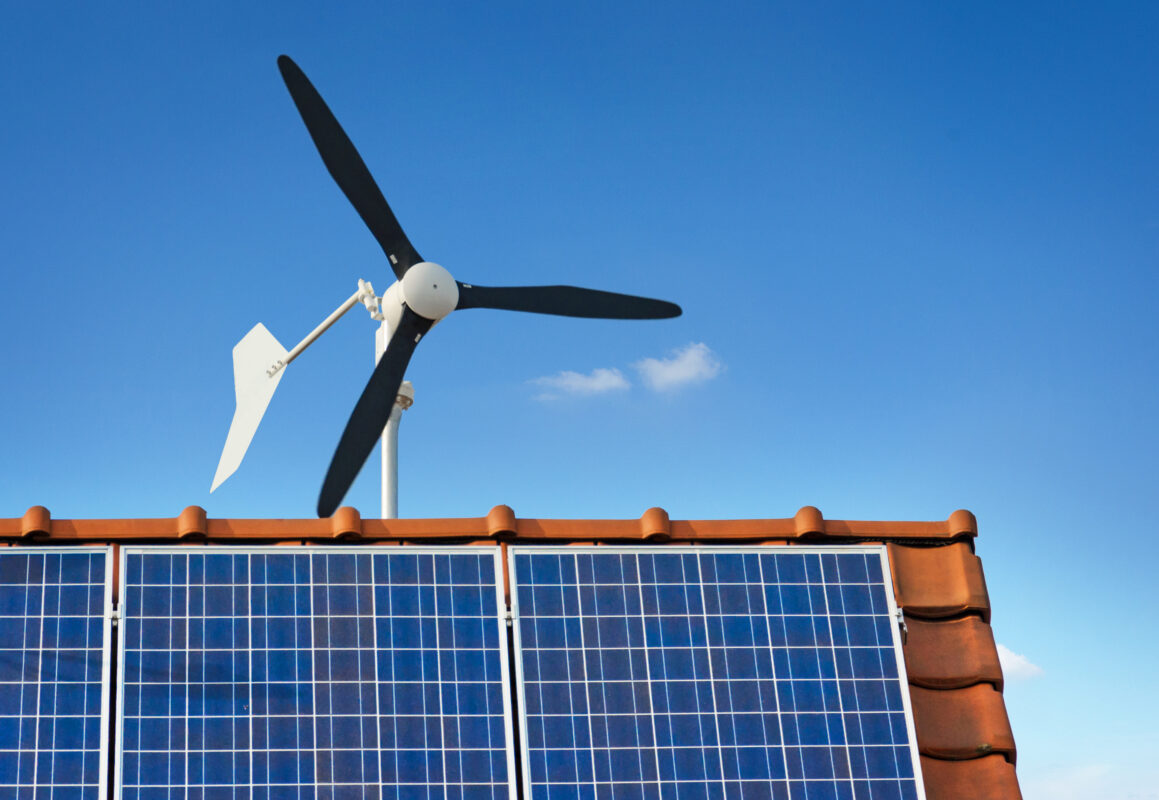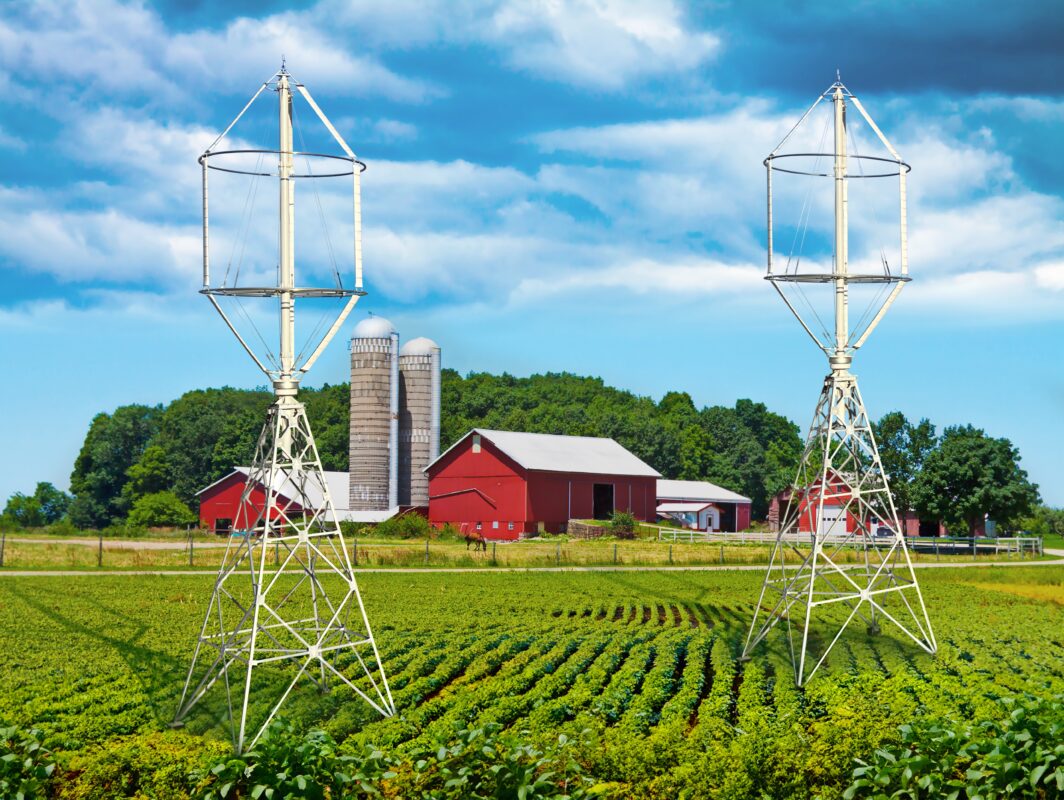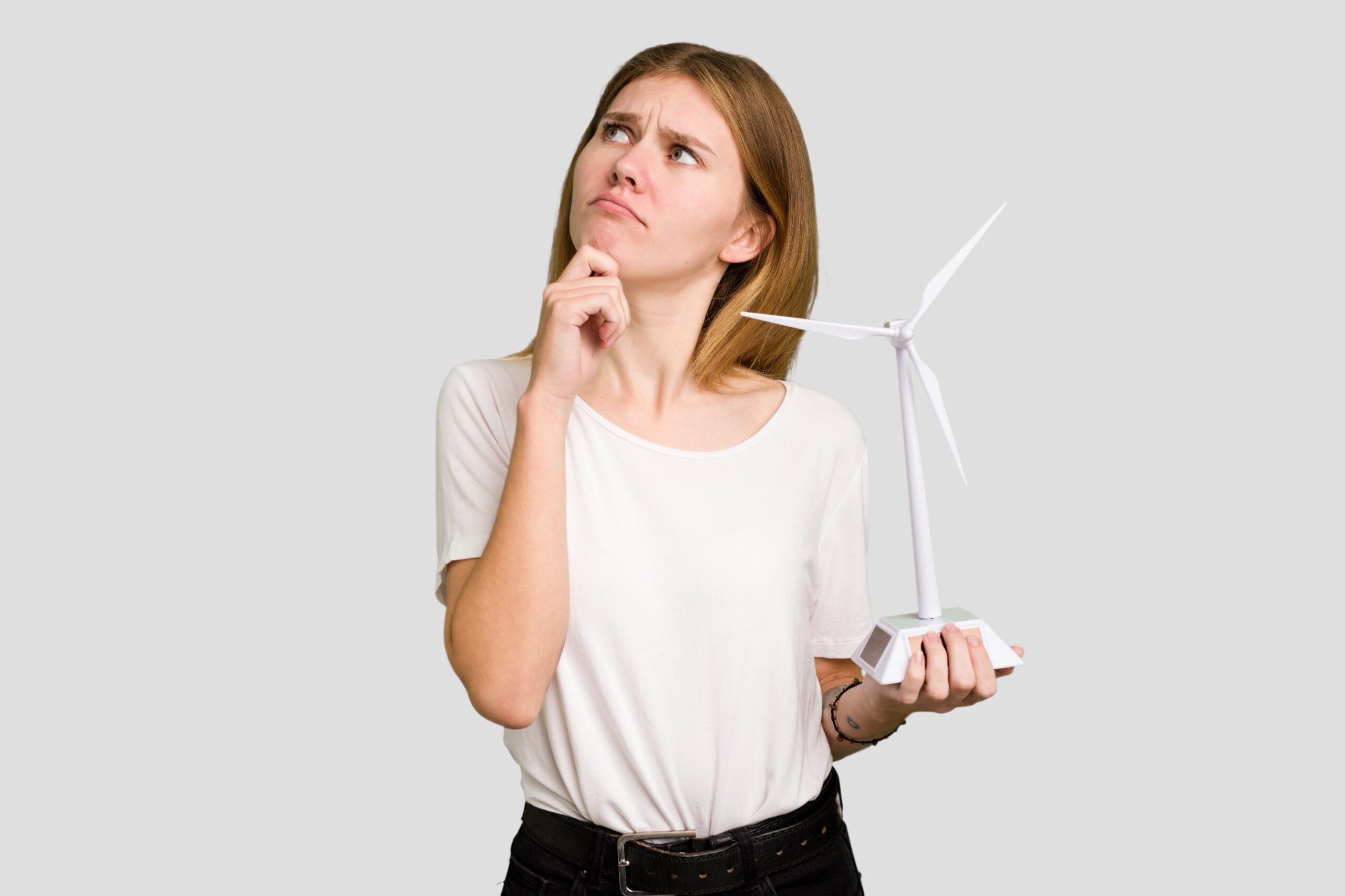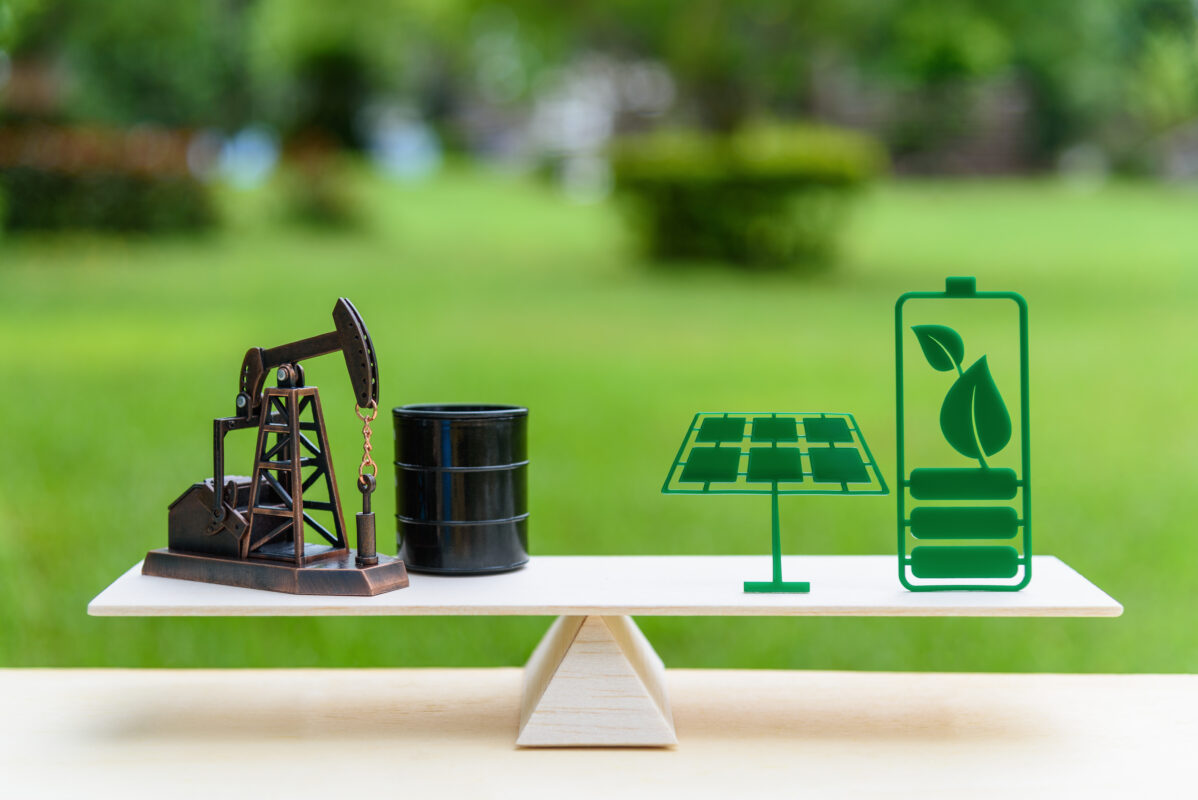With rising electricity prices and growing awareness when it comes to sustainability and renewable energy, homeowners and companies are searching for ways to make their own energy. Wind turbine for home has emerged as a popular, eco-friendly solution, offering clean energy with minimal environmental impact. But before switching to wind power it’s important to determine which of the small wind turbines available on the market will be the most fitting for our needs and space.
Figuring this out involves considering several factors to make sure your system runs efficiently and meets your energy needs. In this guide, we’ll walk you through the steps to help you choose the right turbine size for your home.
Understanding Small Wind Turbines
Are you wondering how wind turbines work? They generate electricity by transforming the wind’s kinetic energy into electrical power. As the wind blows, the turbine’s blades catch it, causing the rotor to spin. This spinning motion drives a generator, which then produces electricity for your home. Essentially, residential wind turbines are just smaller versions of the large industrial wind turbines we may see in our countries. However, these turbines are much more compact—small enough to be installed on your roof or in your backyard. Despite their size, small wind turbines operate just like the larger ones, providing clean, renewable electricity powered solely by the wind. They may come in different wind turbine size and type. Are you wondering how to choose a wind turbine? Our guide should help you choose the right wind turbine design.
Horizontal Axis Wind Turbine (HAWT)
There are several types of wind turbines. The most common one you’ll come across is the Horizontal Axis Wind Turbine (HAWT). It’s called the “horizontal axis” because its rotating axis is positioned horizontally. To operate at its best, a HAWT needs to be facing directly into the wind, so the entire head of the turbine is designed to rotate and adjust its direction, a process known as “yawing.”
As the wind shifts, the turbine head turns to stay aligned with the wind for maximum efficiency. HAWTs are typically used in offshore and onshore wind turbine farms, especially in flat, open areas where the wind flow is steady and less turbulent.

Vertical Axis Wind Turbines (VAWT)
The second option, more common when it comes to small wind turbines, is the Vertical Axis Wind Turbine. Unlike the horizontal version, the VAWT’s rotating axis is vertical. While these turbines are generally smaller, their key advantage is that they don’t need to turn to face the wind. They can capture wind from any direction at all times, thanks to their blade design, which allows them to spin in the same direction no matter where the wind is coming from.
This makes VAWTs particularly useful in places like city rooftops or urban areas where wind direction is constantly shifting due to buildings and other structures. Additionally, a home vertical-axis wind turbine takes up less space than a HAWT of similar power, making it a good choice when space is limited.
Freen is a producer of high-quality vertical-axis wind turbines which meet all of the expectations of homeowners or farms interested in harnessing wind energy and reducing their energy bills. They are perfect both for rural areas, as well as cities and more urban regions.
Factors to Consider When Choosing the Wind Turbine
Deciding we want a small wind turbine to help power our home or business is just the beginning. The goal is to choose a turbine that perfectly fits our needs and available space. Considering there are many different types of small wind turbines, we shouldn’t have a problem choosing the one perfect for us. Here are some factors we should consider before making a decision.
Assessing Your Energy Needs
The first step in figuring out what size wind turbine you need for your building is to understand how much energy your household actually uses. This means taking a close look at your average monthly and yearly electricity consumption, which is usually listed on your utility bills in kilowatt-hours (kWh). By reviewing your energy usage over a year, you’ll have a good sense of your total electricity needs.
For example, if your home uses 10,000 kWh of electricity each year, you’ll need a wind turbine that can produce at least that much energy to fully cover your needs. However, it’s important to note that energy usage can fluctuate depending on the season and lifestyle changes, so it’s a good idea to look at both high and low-consumption months.
Also, consider that a wind turbine’s efficiency depends on how much wind your area receives. Even if your turbine is rated to produce enough electricity, it may not generate that full capacity if wind speeds are inconsistent. Factoring in your local wind conditions is crucial to choosing the right turbine size.
Are you interested in how you can benefit from Small Wind Technologies? We will gladly talk with you about our products! Contact us to schedule a meeting.
Site Considerations
Choosing the right site for a small wind turbine is crucial for maximizing its efficiency. Start by selecting a location with unobstructed wind access, away from wind shadows caused by buildings, trees, or other obstacles that could block airflow. To avoid turbulence, place the turbine upwind of any nearby obstacles, and make sure it’s positioned at least twice the height of these disruptions. Ideally, the site should be close to existing electrical infrastructure to simplify grid connection. A solid, stable surface, like compacted soil or concrete, is necessary to support the turbine’s foundation and handle any vibrations. By carefully choosing a location with clean, steady wind access, you can significantly improve your turbine’s power output.
Wind Resource Assessment
The effectiveness of a wind turbine depends heavily on the wind conditions in your area. Not all locations have consistent or strong winds, and this can significantly impact how much energy your turbine can generate. Understanding the local wind patterns is essential when determining the right size of turbine for your home.
To get a clear picture of the wind resources in your area, you can use wind resource maps or check data from nearby weather stations. These resources give you information about average wind speeds at different heights above the ground, which is important because wind speed tends to increase with height. The key measurement you’ll want is the wind speed at the hub height—the height where the rotor of the turbine is placed.
By studying the wind patterns and average wind speeds in your area, you can determine if a wind turbine will be effective, and what size would be most efficient. Areas with stronger, more consistent winds will allow a smaller turbine to generate sufficient energy, while locations with lower wind speeds might require a larger, more powerful turbine.
Space and Zoning Requirements for Small Wind
Before installing a small wind turbine, it’s essential to ensure you meet all local space and zoning requirements, as well as obtain the necessary permits. Most areas require various permits, such as building, electrical, construction, zoning, and mechanical, to ensure the turbine complies with local building codes and safety standards. You’ll also need to research your area’s zoning laws, which may limit things like tower height, property line setbacks, and noise levels. If your proposed turbine doesn’t meet these rules, you may need to apply for variances or conditional use permits, demonstrating that the turbine will have minimal impact on neighbors.
For those in communities governed by homeowners’ associations or co-ops, written approval from the association may be required, and the installation must comply with any existing guidelines. Additionally, make sure your installation does not violate neighborhood covenants or easements related to issues like view obstructions or noise. By addressing these legal and zoning requirements early on, you can avoid potential roadblocks and ensure your project moves forward smoothly.
Small Wind Turbines Installation on Farms
The agricultural sector and rural communities face many challenges, from unpredictable energy costs to unreliable electricity in remote locations. As the world shifts toward more sustainable solutions, wind energy solutions for agriculture are becoming a valuable tool to help tackle these problems. They can help transform both agriculture and rural electrification. Whether it’s powering irrigation systems or bringing electricity to off-grid villages, wind turbine farms offer a flexible and eco-friendly energy option.

The benefits of small wind turbines for farms go beyond just generating electricity. For farmers, one of the standout uses is in powering irrigation systems, which helps them manage water more efficiently and boost crop production. Thanks to those solutions the cost of small wind turbines for farming will quickly pay off.
Additionally, generating power locally with small wind turbines makes rural communities less dependent on centralized grids. This means fewer outages and disruptions, leading to greater energy security in areas that typically face power instability. By offering a clean and reliable source of energy, using wind energy for farming will play a crucial role in building more resilient rural economies.
Want to learn how you can get into the wind energy business? Let us help! Schedule a meeting to explore your options.
Importance of Choosing the Right Turbine
Choosing the right small wind turbine for your house or farm is crucial because it directly impacts the efficiency, cost-effectiveness, and overall success of your energy system. A turbine that’s too small might not generate enough electricity to meet your energy needs, while one that’s too large could lead to unnecessary costs and wasted energy. Additionally, the right turbine should be suited to your specific wind conditions, location, and energy usage patterns to maximize power output. Proper sizing and selection can also help ensure that your system operates safely and complies with local zoning regulations. Ultimately, picking the right turbine means you’ll get the most out of your investment, with clean, renewable energy that supports your home or farm’s needs.






